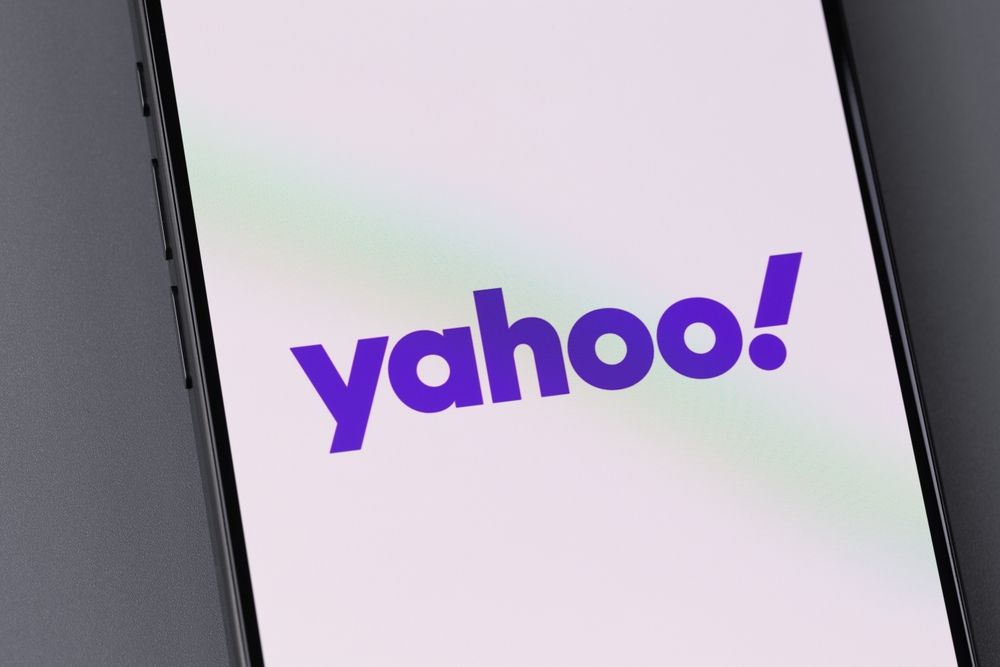
You’ve probably spent countless hours learning about Google SEO. Everyone talks about Google. But have you ever stopped to wonder how to do SEO for Yahoo search engine? It feels like a forgotten corner of the internet, but ignoring it could be a mistake.
Hiring an SEO company to take your business to the next level is an important element to growing your business.
So many potential customers are using it every day, and your competition probably isn’t even thinking about them. If you feel like you’ve hit a wall with Google or just want to open up a new way to get customers, you’re in the right place. You are about to get a clear plan on how to do SEO for Yahoo search engine and tap into a whole new audience.
Wait, Is Yahoo Search Even a Thing Anymore?
I get it. Asking about Yahoo search in this day and age feels a little strange. It’s like asking for a map when you have a smartphone in your pocket. But here’s something you might not know: millions of people still use Yahoo search.
Yes, Google dominates the landscape; there’s no denying that. According to the latest search engine statistics from Statcounter, Yahoo still processes a few percent of all search queries worldwide. A few percent might not sound like a lot, but it translates to millions of searches every single day.
Think about the user base. The demographic that uses Yahoo often skews a bit older and can be fiercely loyal to the platform they’ve used for decades. This audience often has significant purchasing power and brand loyalty, making them a valuable target for many businesses.
The Big Secret: Yahoo SEO is Bing SEO
Here is the most important thing you’ll learn today. Since 2009, all of Yahoo’s organic search results have been powered by Microsoft Bing. That’s right. When someone searches on Yahoo, the list of websites they see comes directly from Bing’s index.
This is fantastic news for you. Why? Because you don’t have to learn a whole new, complicated system for a separate search engine. When you learn how to do SEO for Yahoo, you’re also learning how to do it for Bing.
You get to optimize for two platforms with one single effort. This Microsoft Search Network partnership simplifies your life and doubles the potential return on your SEO work. All the tools, techniques, and strategies we’re about to cover are focused on pleasing the Bing search algorithm.
Getting Started: Your First Steps for Yahoo SEO
Before you can optimize anything, you need to get on Bing’s radar. This is non-negotiable and is the foundation for everything else you will do. The good news is that it is surprisingly simple.
Claim Your Site on Bing Webmaster Tools
The single most important tool for this job is Bing Webmaster Tools. Think of it as the Google Search Console for the Bing and Yahoo world. It’s a free service from Microsoft that lets you see how your website is performing in their search results.
Signing up is your first real step. It’s the only way to officially tell Bing, “Hey, this website is mine, please pay attention to it.” It gives you a direct line of communication to the search engine, allowing you to monitor health, submit content, and view performance data.
The process is very straightforward. You can go to the Bing Webmaster Tools site and sign up with a Microsoft account. Even better, they let you import your site directly from Google Search Console, which can have you set up in minutes without needing extra verification steps.
Submitting Your XML Sitemap
Once you are inside Bing Webmaster Tools, your next job is to submit an XML sitemap. A sitemap is just a file that lists every important page on your website. It’s like giving the search engine a roadmap so it doesn’t miss anything.
Without a sitemap, Bing has to crawl your site page by page, following links to discover your content. This can take time, and some pages might get missed, especially if they are not well-linked internally. Giving them a sitemap makes sure they know about everything you want them to see.
You can usually find your sitemap at an address like yourwebsite.com/sitemap.xml. You just copy that URL and paste it into the Sitemaps section of Bing Webmaster Tools. It’s a set-it-and-forget-it task that pays off with faster and more complete indexing.
How to Do SEO for Yahoo Search Engine: The On-Page Factors
Now we get into the nitty-gritty of making changes to your website itself. These are called on-page SEO factors. Many of the basics overlap with what you know from Google, but Bing and Yahoo place importance on slightly different things.
Keywords: Exact Match Still Matters More
Google has become incredibly smart about understanding context and synonyms. You can write about “cool athletic shoes” and still rank for “best running sneakers.” Google gets the intent behind the words.
Bing is also smart, but it still gives more weight to keywords that exactly match the user’s search query. This is a subtle but important difference in on-page optimization. It means you need to be more direct with your keyword usage for effective results.
If you want to rank for “custom handmade leather belts,” you should make that exact phrase appear in key places. You can find what people are searching for using Bing’s own Keyword Research tool right inside Webmaster Tools. It shows you what real users are typing into Bing and Yahoo, taking the guesswork out of it.
Perfecting Your Title Tags and Meta Descriptions
Your page title, or title tag, is one of the most powerful on-page signals for Bing. This is the blue clickable link that shows up in search results. Your primary keyword needs to be here, preferably at the very beginning.
A structure like “Custom Handmade Leather Belts Your Brand Name” is perfect. It immediately tells Bing and the user what your page is about. It’s simple, direct, and effective for higher rankings.
Meta descriptions are the short blurbs of text under your title in the search results. While they don’t directly make you rank higher, they are incredibly important for getting people to click on your link. According to Bing’s own guidelines, a strong click-through rate can be a positive signal, so write compelling descriptions that include your keyword and a call to action.
Content Quality and Structure
Just like Google, Bing wants to show users high-quality content that answers their questions. There are no shortcuts here. You need to create useful, well-written, and trustworthy information for your audience.
Bing seems to appreciate a very clear and traditional content structure. This means using a single main heading (H1) at the top of your page, followed by logical subheadings (H2, H3) to break up your text. This helps the search engine, and humans, understand the flow of your article.
Don’t be afraid to write in-depth content. While there’s no magic word count, pages that thoroughly cover a topic tend to perform better. The goal is to be the best possible resource for someone searching for your keyword, including relevant images and videos to enrich the user experience.
Beyond the Page: Off-Page and Technical SEO for Yahoo
What happens off your website is just as important as what happens on it. This includes factors like backlinks from other sites and your site’s technical health. These off-page SEO signals build trust and authority with search engines.
The Power of Backlinks
Backlinks are links to your site from other websites. Think of them as votes of confidence. Bing places a very high value on them, maybe even more than Google does.
But not all links are created equal. Bing and Yahoo give a lot of weight to backlinks from highly trusted and authoritative domains. According to research comparing the search engines, Bing strongly considers domain age and top-level domains like .gov and .edu as signs of trust.
This means you should focus on getting high-quality links, not just a high quantity of them. One link from a respected industry website or a university page is worth more than a hundred links from low-quality directories. It is a long-term strategy, but it is one that works.
| Backlink Factor | Bing/Yahoo Emphasis | Google Emphasis |
|---|---|---|
| Domain Authority & Age | Very High | High |
| .edu & .gov TLDs | Very High | High (as a correlation of authority) |
| Anchor Text Exact Match | Moderate | Lower (prefers natural/varied text) |
| Quantity of Links | Moderate | Lower (quality over quantity) |
The Social Media Connection
This is another area where Bing differs from Google. Bing has been much more open about the fact that it considers social media signals in its ranking algorithm. Strong, positive engagement on social platforms can be a good thing for your visibility.
This doesn’t mean you’ll jump to the number one spot just because a tweet goes viral. But it does mean that an active and engaged social media presence on platforms like X (formerly Twitter) and Facebook supports your overall SEO efforts for Bing and Yahoo.
It shows Bing that you’re a real, active brand that people are talking about. Consistent sharing of your content can lead to faster indexing and signals to Bing that your brand is a current and relevant entity.
Technical Health Matters
A technically sound website is fast, secure, and easy for both users and search engines to use. This is a fundamental part of all modern SEO. You need to get the basics right for a solid technical SEO audit.
Make sure your website loads quickly. A slow website frustrates users and can hurt your rankings. Also, your site absolutely must be mobile-friendly, meaning it looks and works great on a smartphone. More searches happen on mobile devices than desktops today.
Your URLs should be clean and simple, too. A URL like yourwebsite.com/blog/handmade-belts is much better than yourwebsite.com/cat_id=123?product=456. Use the Site Scan tool in Bing Webmaster Tools to find and fix these kinds of technical problems.
Local SEO for Yahoo: Getting Found in Your Area
If you run a business with a physical location, like a store or a service-area business, local search is everything. You want people in your community to find you when they need you. For Yahoo, this all runs through a tool called Bing Places for Business.
It is the equivalent of a Google Business Profile. Setting up your listing is completely free and is the most effective thing you can do for local SEO for Yahoo. You’ll give your business name, address, phone number (NAP), hours, and photos.
It’s very important that your information is accurate and consistent everywhere on the web. A single, complete Bing Places listing feeds information to Yahoo Search, Yahoo Maps, and Bing Maps. It is the central hub for your local presence on these platforms, so filling out every field is a good idea.
Putting It All Together: A Simple Checklist
Feeling a bit overwhelmed? Don’t be. Here’s a simple checklist that boils it all down into actionable steps.
- Sign up for Bing Webmaster Tools and add your site. If you use Google Search Console, you can just import it.
- Find and submit your XML sitemap inside Bing Webmaster Tools.
- Use the keyword research tool to find terms people are actually searching for on Bing and Yahoo, focusing on exact matches.
- Write compelling title tags and meta descriptions that feature your main keyword at the beginning.
- Create helpful, in-depth content with a clear heading structure (H1, H2s, H3s).
- Focus on building high-quality backlinks from trusted and authoritative websites.
- Keep your social media profiles active and engaged.
- If you’re a local business, create and fully optimize your free Bing Places for Business listing.
Frequently Asked Questions
1. How long does it take to see results on Yahoo?
SEO is a long-term strategy, regardless of the search engine. After implementing these changes, you can start seeing movement in a few weeks, but significant results often take 3 to 6 months. Using Bing Webmaster Tools will help you track your progress and see how quickly Bing is crawling and indexing your changes.
2. Should I stop focusing on Google SEO?
No, you should not. Think of Yahoo and Bing SEO as a supplement to your Google strategy, not a replacement. Many SEO best practices, like creating high-quality content and having a technically sound website, benefit you on all search engines.
3. Is there a tool to submit URLs directly to Bing and Yahoo?
Yes, there is. Inside Bing Webmaster Tools, there is a URL Submission tool that allows you to submit URLs for immediate crawling consideration. Bing also co-developed the IndexNow protocol, which automatically notifies search engines when your content is updated, leading to much faster indexing across platforms that support it.
Conclusion
So, what have we learned? The secret to Yahoo SEO isn’t really a secret at all. It is all about focusing your efforts on Bing. Because Bing powers Yahoo’s search results, everything you do to optimize for Bing will directly benefit your visibility on Yahoo.
It’s not about choosing between Google and Yahoo. It’s about adding a powerful and often overlooked strategy to your marketing. This “two-for-one” approach is an efficient way to expand your reach without doubling your workload.
Learning how to do SEO for Yahoo search engine gives you access to millions of potential customers your competitors are likely ignoring. By following these steps, you can gain a quiet advantage, diversify your traffic sources, and grow your business in a less crowded marketplace.












